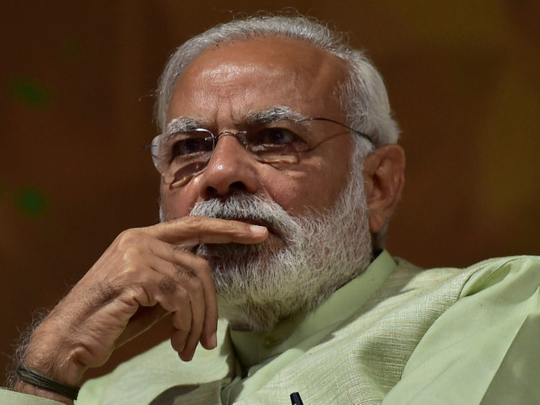
With the appointment of Yogi Adityanath, the saffron-robed firebrand Hindu priest, as the Chief Minister of Uttar Pradesh (UP), India’s largest and most populous state, the ruling Bharatiya Janata Party (BJP) is signalling that they have the mandate to impose a Hindu right-wing agenda on the country. The BJP is making an unequivocal assertion that a Hindu nation is India’s natural destiny.
This is an inflection point in the country’s history and the ramifications are profound. Nehru’s vision of India has been repudiated and this upending of the country’s foundational values has been long in the making. The party associated with India’s freedom struggle, Congress, Nehru’s party, must bear the primary responsibility for this hollowing out of ideas and principles on which India was founded. Nehru’s speeches and voluminous writings have over the years also come in for scathing criticism on the count of being dismissive of India’s glorious past. For the Hindu Right this is heresy, their orthodoxy is wrapped up in nativism and a glorification of the past. For them, ancient India is the cornerstone and its texts the repository of all wisdom. However, a careful reading of Nehru’s writings and speeches reveal that the great man did indeed extoll India’s rich heritage and spoke glowingly of some of ancient India’s achievements. But he was also clear-sighted enough to warn his fellow countrymen that modern India needed to turn its gaze to the future and dwell less on its past. And the fact remains India as a single nation–state as understood in contemporary terms did not exist since time immemorial. It is a recent invention.
For Nehru, a composite culture was an article of faith and he abhorred a monochromatic identity rooted in majoritarianism. His commanding presence in national life ensured these ideas were accepted unquestioningly, though there were dissenting voices. Over time these dissenting voices have grown into a multitude and foundational beliefs like pluralism and secularism have got tainted. Vote bank politics devalued these lofty ideals and the Congress party is responsible for this. It was lazy politics at its worst; purchasing minority votes by backing some of the most conservative and retrograde elements of the clergy within the minority community. The rising tide of majoritarianism seen since the 1980s has also found the Congress party scrambling for an effective counter narrative.
All of this has been well-documented, but what of the public intellectual and the academia in general? Have they been one-sided in their renditions of India’s past? The book titled The Idea of India and tomes written by historian Ramchandra Guha reinforce the point that the modern Indian state is a post-colonial creation and that academicians who argue otherwise lack the rigour and scholarship to be taken seriously. Guha rebuts the claims put forward by right-wing historians in his essay ‘Where are the conservative intellectuals in India?’
Guha is India’s pre-eminent chronicler and he helps us understand the enormously complex history of India and gives an authoritative account of its march to nationhood. But has he been selective in his telling of history? Much of what he says about lack of research and academic discipline is true when statements are made that plastic surgery originated in ancient India and other such fanciful claims. And while dogmas, beliefs and mythology should find no place in rigorous historical writing, it is an undeniable fact that Hinduism has been a common thread that to a large extent bound India together from antiquity.
Not bound together as a unitary state in the modern sense but as a civilisational link it has greatly influenced Indian thinking. Harvard scholar Diana Eck, says: “Thousands of years before India was a nation-state (1947), a colony of Britain (the 18th century), or a cartographic vision on a map (1782), it was conceived as a geographical unit in the hearts and minds of the faithful, and particularly in the religious imagination of Hinduism.”
The story of 9th Century theologian Adi Shankara who unified Hinduism is another pivotal element in giving some credence to a pre-existing Indian nation-state. Born in Kerala, he crisscrossed the country and established religious monasteries in the four corners of India. This physical imprint of the religion across the sub-continent speaks of Hinduism’s reach and is the central idea in Diana L. Eck’s India: A Sacred Geography. The magazine India Today in its book review said: “India is united by its sacred core, not by the power of kings and governments.” Unsurprisingly, the Hindu Right has found a new champion for its cause. Historians like Guha would counter that these gossamer threads to knit together a new narrative is precisely what can be termed as fanciful writing of history. The mere fact that pilgrims traversed vast distances or that Hindu temples dotting the landscape have been found does not establish historical truths.
Nevertheless, a very compelling case has been made for us to relook at ancient India. Perhaps the Hindu Right has given the secularists pause to think.
Ravi Menon is a Dubai-based writer, working on a series of essays on India and on a public service initiative called India Talks.









